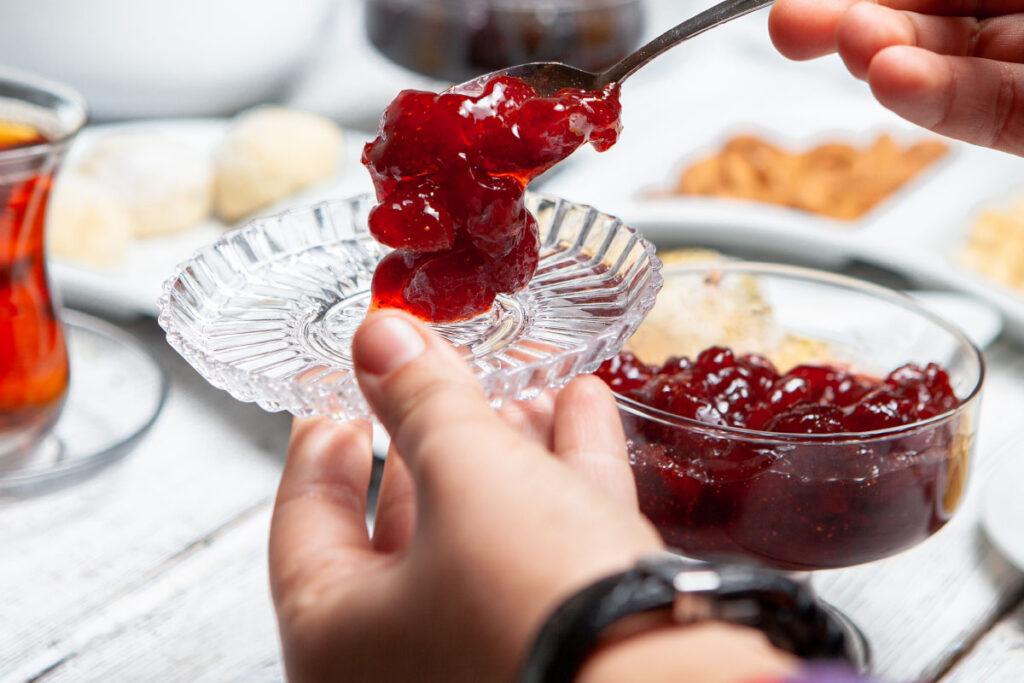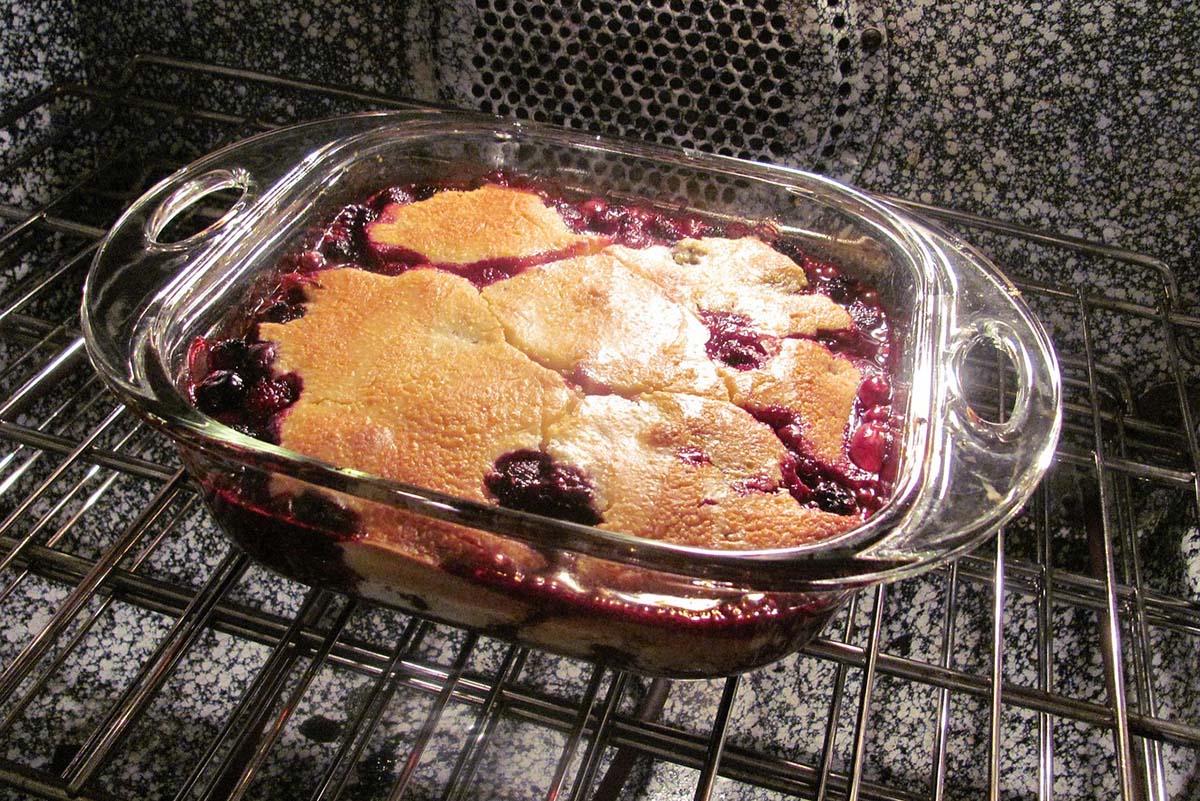Introduction: A Culinary Journey into the Heart of British Desserts
In the world of sweets and treats, the British cobbler stands out as a beacon of comfort and tradition. This delightful dessert, rich with history and bursting with flavor, offers a warm embrace to anyone who takes a bite. Unlike its American cousin, the British cobbler has its own unique charm, often sparking curiosity and wonder about its origins, ingredients, and the magic behind its preparation. As we delve into the essence of this classic dish, we’ll explore not just the ingredients and recipes that make it a staple in British cuisine, but also the cultural tapestry it weaves. So, let’s don our aprons and embark on a culinary expedition to discover the enchanting world of the British cobbler.
Understanding British Cobbler
The Basics of British Cobbler
At its heart, the British cobbler is a testament to the ingenuity of traditional cooking. This dessert, often confused with its crumbly cousin, the crumble, is distinguished by its scone-like topping, lovingly placed over a bed of sweet, simmering fruits. The choice of fruit can vary by season, ranging from apples and blackberries to peaches, making it a versatile dish for any time of year.
The ingredients typically found in a British cobbler are simple, yet capable of creating something truly extraordinary. Flour, butter, and sugar combine to form the doughy topping, while the fruit mixture underneath is enhanced with just a touch of sugar, and sometimes spices, to bring out the natural flavors.
Comparison with American Cobbler
While both the British and American versions of cobbler share a common name, their textures and methods of preparation set them apart. The American cobbler resembles a deep-dish fruit pie topped with biscuit or cake-like layers. Sometimes, it includes oats or nuts for added texture.
On the other hand, the British cobbler maintains a focus on simplicity. It lets the scone-like topping and the richness of the fruit shine without the need for additional embellishments.
This distinction not only highlights the diversity within the world of cobblers but also emphasizes the importance of understanding and appreciating regional variations in cuisine.
Whether you’re a fan of the fluffy American style or the traditional British version, there’s no denying the universal appeal of this comforting dessert.
The History and Cultural Significance
A Journey Through Time
The story of the British cobbler is a savory narrative that intertwines with the fabric of Britain’s culinary history. This dessert, with its roots deeply embedded in the British Isles, serves as a testament to the ingenuity and resourcefulness of its people. Originating in the 14th century, the cobbler began as a means for families to enjoy a sweet treat using whatever fruits were in season, combined with a simple dough topping.
This adaptability made the cobbler a staple, especially in rural areas where resources were scarce. The warmth of a home-cooked dessert brought solace during the long, cold winters.
Regional Variations within the UK
It is a beacon of comfort and tradition. This delightful dessert is rich with history and bursting with flavor. It offers a warm embrace to anyone who takes a bite. Unlike its American cousin, the British cobbler has its own unique charm. It often sparks curiosity and wonder about its origins, ingredients, and the magic behind its preparation. As we delve into the essence of this classic dish, we’ll explore not just the ingredients and recipes that make it a staple in British cuisine. We’ll also explore the cultural tapestry it weaves. So, let’s don our aprons and embark on a culinary expedition. We aim to discover the enchanting world of the British cobbler.

How to Make a Traditional British Cobbler
Crafting the Perfect Dessert
Delving into the preparation of a traditional British cobbler, one discovers the joy of transforming simple ingredients into a dessert that’s both comforting and sophisticated. Here’s a detailed recipe that captures the essence of this beloved dish:
Ingredients:
- 2 1/2 cups of all-purpose flour, plus extra for dusting.
- 1/2 cup of cold, unsalted butter, cut into small cubes.
- 1/4 cup of granulated sugar, plus 2 tablespoons for the topping.
- 2 teaspoons of baking powder.
- A pinch of salt.
- 3/4 cup of cold milk.
- 4 cups of mixed summer berries (such as strawberries, blueberries, and raspberries).
- 1/4 cup of caster sugar for the fruit.
- Juice of 1 lemon.
- 1 tablespoon of cornstarch.
Directions:
- Begin by preheating your oven to 400°F (200°C). In a large mixing bowl, combine the berries, lemon juice, cornstarch, and caster sugar. Gently toss to coat the fruit evenly, then transfer to a deep baking dish, spreading the mixture out evenly.
- In another bowl, sift together the flour, granulated sugar, baking powder, and a pinch of salt. Add the cold butter cubes and use your fingertips to rub the butter into the flour mixture until it resembles coarse breadcrumbs.
- Make a well in the center of your dry ingredients and pour in the cold milk. Stir gently with a fork until just combined. The dough should be soft but not sticky; add a little more flour if necessary.
- On a lightly floured surface, gently knead the dough just a few times to bring it together. Then, roll it out to about 1/2 inch thickness and cut into rounds using a biscuit cutter or the rim of a glass.
- Place the dough rounds on top of the berry mixture in the baking dish, slightly overlapping them until the surface is covered. Sprinkle the remaining 2 tablespoons of sugar over the dough.
- Bake in the preheated oven for 25 to 30 minutes, or until the topping is golden brown and the fruit mixture is bubbling. Let cool slightly before serving to allow the fruit mixture to thicken.
Chef’s Advice:
Achieving the perfect British cobbler lies in the balance of its components. The dough should be light and airy, providing a delightful contrast to the rich, juicy fruit beneath. One key tip is to handle the dough as little as possible to keep it tender. Additionally, while this recipe uses mixed berries, feel free to experiment with seasonal fruits or add a hint of spice to the fruit mixture, such as cinnamon or vanilla, to enhance the flavors and create a dessert that’s uniquely yours.
Modern Twists on the Classic
Innovating Tradition
The British cobbler is a classic dessert that’s ripe for innovation. Modern culinary techniques and global influences have introduced new ways to enjoy this traditional dish. For instance, incorporating whole grain flours such as spelt or buckwheat can add a nutty depth to the topping, while a splash of elderflower cordial in the fruit mixture can introduce a subtle floral note, elevating the dish to new heights.

Pairing Ideas for a Modern Palate
To complement the rustic charm of the cobbler, consider modern pairings that add texture and contrast. A dollop of mascarpone cheese lightly whipped with honey, for example, can add a luxurious creaminess that melds beautifully with the tartness of the fruit. For those looking for a dairy-free option, a coconut milk ice cream offers a refreshing and vegan-friendly accompaniment that’s both indulgent and mindful of dietary preferences.
FAQs: Delving Deeper into the British Cobbler
Q: What fruits can be used in a British cobbler?
A: The beauty of a British cobbler lies in its versatility. Traditional versions often feature apples, blackberries, or rhubarb, but you’re not limited to these choices. Summer berries, peaches, plums, and cherries also make excellent fillings. The key is to use seasonal fruits that are ripe and full of flavor, ensuring the cobbler is deliciously sweet and tangy.
Q: How does a British cobbler differ from a crumble?
A: While both desserts are celebrated for their fruit bases, the main difference lies in the topping. A British cobbler is topped with a scone-like dough, dropped in spoonfuls over the fruit to create a cobblestone appearance. A crumble, on the other hand, has a topping made from a mixture of flour, butter, and sugar, crumbled over the fruit to give a more uniform, crunchy texture.
Q: Can British cobbler be made gluten-free?
A: Absolutely! To make a gluten-free British cobbler, simply substitute the all-purpose flour with a gluten-free flour blend designed for 1:1 substitution. This ensures the topping retains its delightful texture. Don’t forget to check the labels on any other ingredients to make sure they’re also gluten-free.
Q: Is it possible to make a vegan British cobbler?
A: Yes, making a vegan version of a British cobbler is quite straightforward. Use a plant-based butter and milk alternative for the dough, and ensure your sugar is vegan (some sugars are processed with bone char). With these simple swaps, you can create a vegan cobbler that’s just as delicious as the traditional recipe.
Q: How should leftovers be stored?
A: Leftover British cobbler can be covered and stored in the refrigerator for up to 3 days. To reheat, place it in a warm oven until heated through. This helps maintain the texture of the topping better than microwaving.
Conclusion: The Enduring Charm of the British Cobbler
The British cobbler embodies the essence of comfort food, with a rich history, simplicity of preparation, and the joy it brings to those who share in its warmth. This dessert, which has stood the test of time, continues to inspire and delight, its versatility and the potential for personalization unmatched. Whether you’re a purist who cherishes the classic recipe or an innovator eager to explore new variations, the British cobbler offers a canvas for culinary creativity. So, as we close this chapter on our culinary journey, we invite you to roll up your sleeves, preheat your oven, and partake in the timeless tradition of making a British cobbler, a dessert that’s sure to warm hearts and bring smiles to any table.

